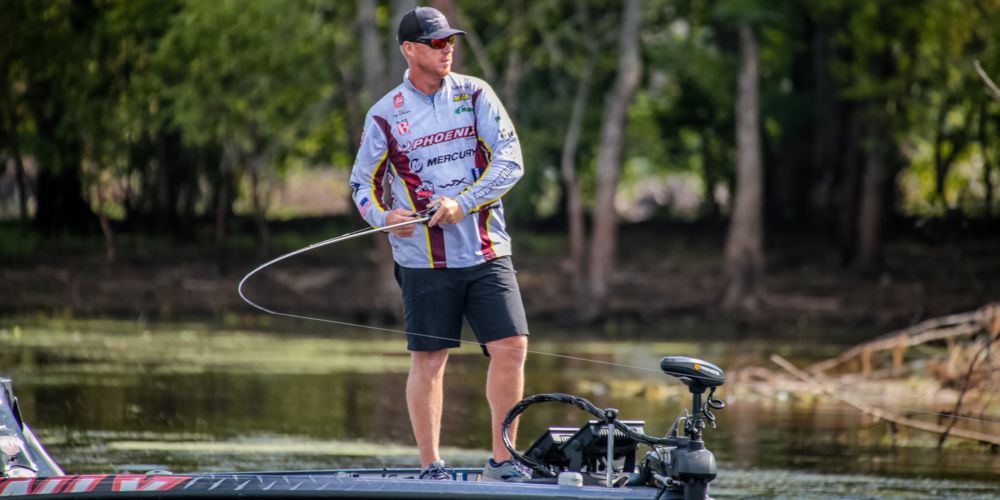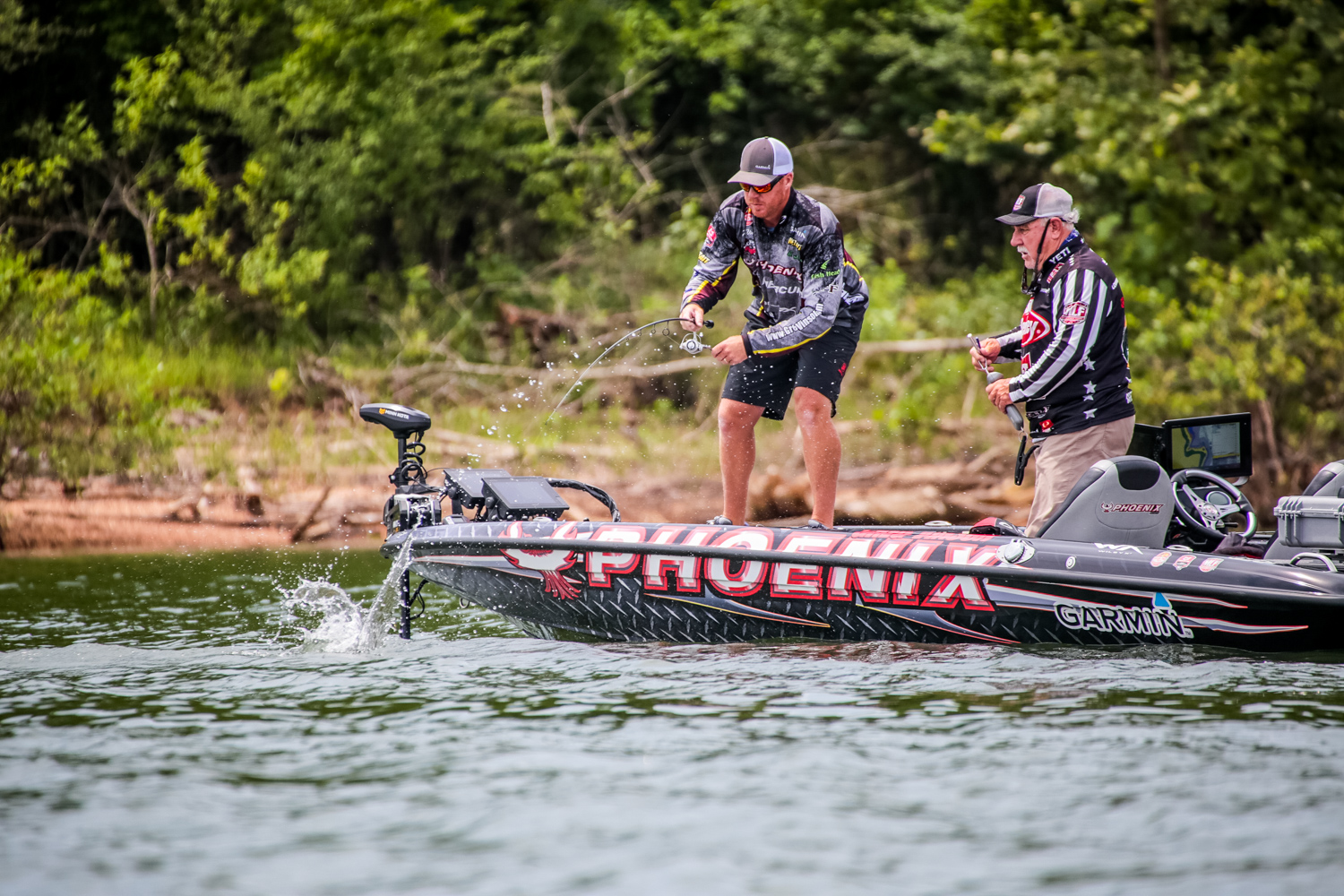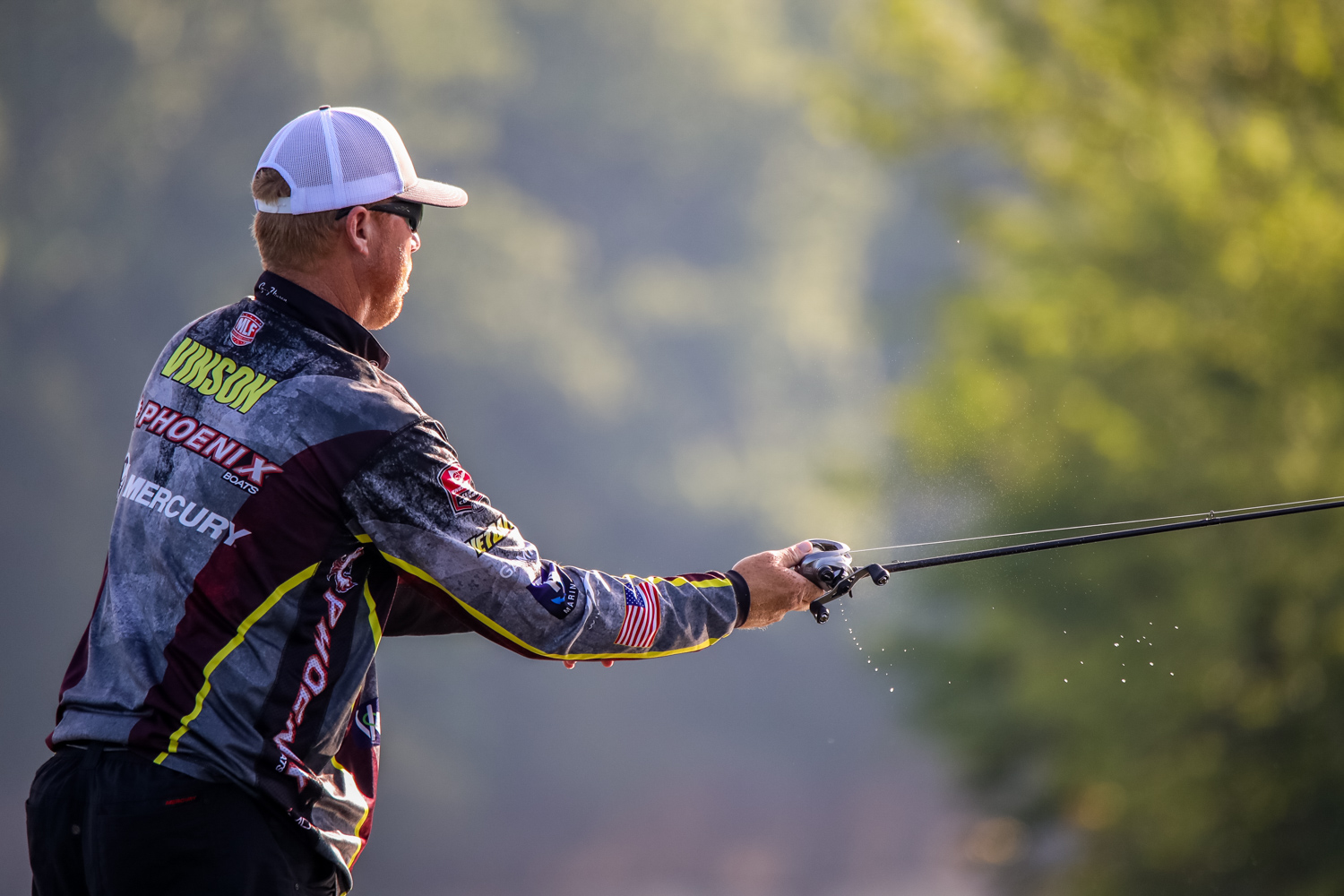Read Up on “The Rooster’s” Rod Rules

Finding rod and reel combos that fit you physically – while also fitting your style of fishing – can be difficult at times. It’s a very personal thing for an angler. MLF pro Greg Vinson is no stranger to the trials of finding the best combination of rod power and actions (along with an ideal reel) to make the combo come alive in his hand.
We picked “The Rooster’s” rod-savvy brain for a “starting five” of rod/reel combos to get you going as a bass angler, whether you want to make it to the Bass Pro Tour someday or just enjoy rippin’ lips at your local pond.
Rod No. 1: The All-Around Must-Have
First is Vinson’s all-around choice, which he insists that every bass angler should own.
“A 7-foot, 2-inch medium-heavy casting rod with a fast action is a real go-to rod,” Vinson says. “Pair that rod – in fact, all of the casting rods I’ll recommend – with a 7.2:1 gear ratio reel. I find that speed reels fast enough to take up line quickly, but not so fast where it’ll cause you to fish too quickly when you need to slow it down.
“If I had a friend getting into bass fishing, this is the best setup to start with. You can fish just about anything with it. Now, it’s not perfect for every technique, but it’s usable with spinnerbaits, vibrating jigs, swim jigs, dragging worms – just a lot of techniques. This should be the first on the list to buy. Of course, it’s a personal choice, but a 7-foot to 7-foot, 3-inch blank will work for this rod.”
Rod No. 2: The Flipping/Pitching Rod
For your second choice, Vinson says that a flipping, pitching, frog, and swim jig rod is a good one to add to your rod box.
“I really like a 7-foot, 4-inch blank for this style of rod,” Vinson says. “I want it heavy action, not extra heavy. You need and want some bend in the rod when you are fighting fish. Also, I’m often fishing braided line with this rod, so it’ll have plenty of power to pull fish out of thick cover. Also, use a fast tip action and not extra fast. This rod is the right length and action for me to be accurate when I need to cast with it as well.”

Rod No. 3: The Jerkbait Rod
Vinson has established himself as an excellent jerkbait fisherman, and offers a slightly different take on a jerkbait rod compared to some manufacturers.
“My favorite rod length for jerkbait and topwater fishing is a 7-foot 2-inch medium-action casting rod with a fast tip,” says Vinson. “A lot of the rod manufacturers claim extra fast is better for bait control. What I’ve found over the years is that I lost a lot of fish with the extra-fast tip. It’s just not forgiving when the fish surges, and you’ll pull the hooks out. Using the medium action with the fast tip has significantly increased my fish landing percentage.
“This rod is also pretty versatile. You can use it to throw Senkos, smaller spinnerbaits, even squarebill crankbaits. For anglers who don’t like using spinning gear, this rod is a good choice for fishing shaky heads too.”
Rod. No. 4: The Finesse Favorite
For the fourth rod in his basic lineup, Vinson switches over to his finesse-fishing favorite.
“For me, a 6-foot, 10-inch to 7-foot-long spinning rod with a medium action and a fast tip cover most finesse situations,” said Vinson. “I’ll pair that rod with a 2500 size spinning reel, load the reel with braided line and use a fluorocarbon leader. It’s the right balance of length for good hooksets and still being able to maintain accuracy when casting. It’s ideal for all of your finesse bait uses.”
Rod No. 5: The Right Cranking Stick
The final member of Vinson’s “Fabulous 5” is a composite rod designed to keep fish buttoned up.
“I use a composite blank with a parabolic action when choosing a crankbait rod,” Vinson says. “I believe everyone should have this style of rod in their arsenal. Anywhere from 7-foot 1-inch to 7-foot 6-inches long. I prefer a 7-foot 4-inch blank. Like the pitching rod, I believe this length still allows for accurate casts if needed. Plus, the parabolic action helps make really long casts. It’s great for squarebills and other crankbaits and vibrating jigs. Load the reel with braid and it can be a decent topwater outfit, especially with bigger baits.
“This style rod really acts as a shock absorber and has a slight delay in hookset response, which allows for better hookups with the types of lures you’re using with it.”

“The Rooster’s” Rules for the Road
Now that you know what Vinson suggests for rod lengths and actions, there’s still a little more to share to make your rod choices a little easier.
“I want to mention a general guideline for rod handle selection,” Vinson says. “Not as far as materials, but length. For most jerkbait and topwater rods, you ideally want the rod butt to rest on the fattest part of your forearm, but not all the way down to your elbow. For flipping and pitching a little longer length and for the rest, go somewhere between the two.
“For me, finding a rod and reel that you like and will use is like buying shoes. Sure, you can order everything online, but you never can tell if it’ll fit. I prefer to try on shoes at a store to make sure they fit. You should do the same when it comes to finding the ideal rod for you. It’s really all about how it fits, what you want to do with it, and your own personal preferences.”